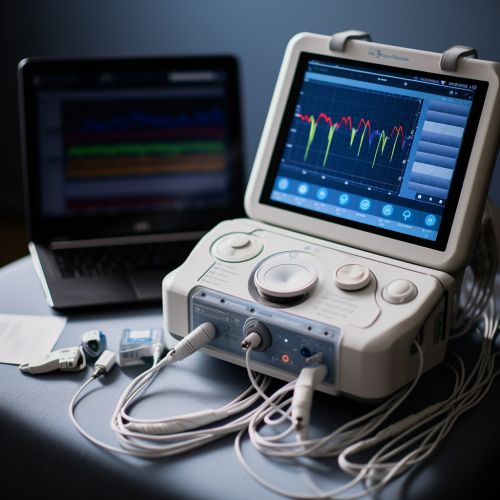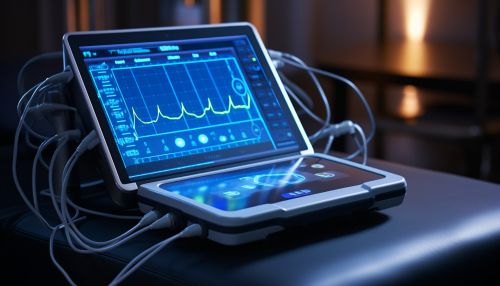Electrocardiogram
Overview
An Electrocardiogram (ECG or EKG) is a diagnostic tool that records the electrical activity of the heart over a period of time. This non-invasive procedure is used to detect and study heart conditions by measuring the timing and duration of each electrical phase in your heartbeat.
History
The development of the electrocardiogram is attributed to the combined efforts of multiple scientists and physicians throughout the 19th and 20th centuries. The first to make a significant contribution was Augustus Waller, who recorded the first human electrocardiogram in 1887. However, it was the Dutch physician Willem Einthoven who is credited with the development and standardization of the modern ECG.
Principles
The ECG works on the principle of bioelectricity. The heart's electrical activity is caused by a series of complex bioelectrical processes. When the heart contracts, it generates an electrical current that spreads throughout the body. This current can be detected and measured on the skin using electrodes, which are connected to an ECG machine.
Procedure
The ECG procedure is simple and painless. The patient is asked to lie down, and several electrodes are attached to the skin on the chest, arms, and legs. These electrodes are connected to the ECG machine, which records the electrical activity of the heart. The resulting graph, or electrocardiogram, represents the electrical activity of the heart as wave components.
Interpretation
Interpreting an ECG involves understanding the different wave components and what they represent. The P wave represents atrial depolarization, the QRS complex represents ventricular depolarization, and the T wave represents ventricular repolarization. Any deviations from the normal ECG pattern can indicate various heart conditions.
Clinical Significance
The ECG is an essential tool in the diagnosis and management of many cardiovascular diseases. It can detect arrhythmias, myocardial infarction, and other heart conditions. It is also used to monitor the effects of certain medications on the heart.
Limitations
While the ECG is a valuable diagnostic tool, it has its limitations. It only provides a two-dimensional view of the heart's electrical activity and may not detect all types of heart disease. Furthermore, an ECG can sometimes show abnormalities even in a healthy person.
Future Developments
Advancements in technology are leading to the development of more sophisticated ECG devices. These include wearable ECG monitors and smartphone-based ECG apps, which allow for continuous monitoring and early detection of heart conditions.
See Also


